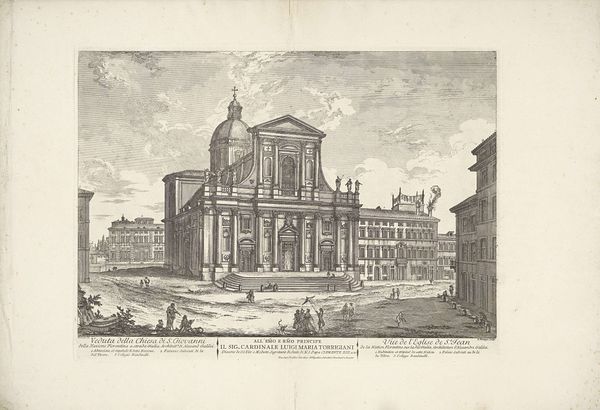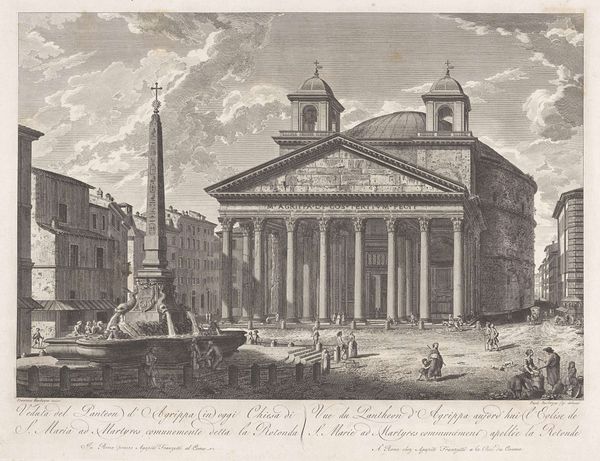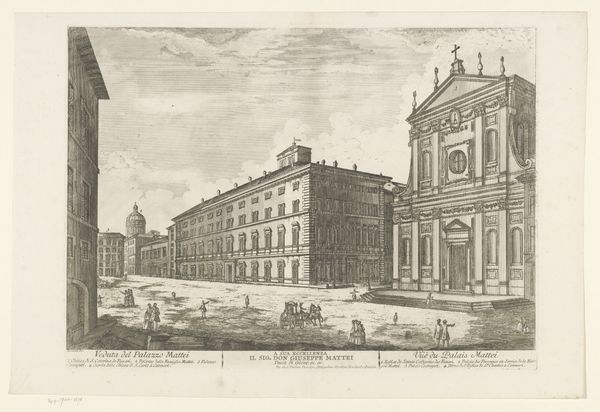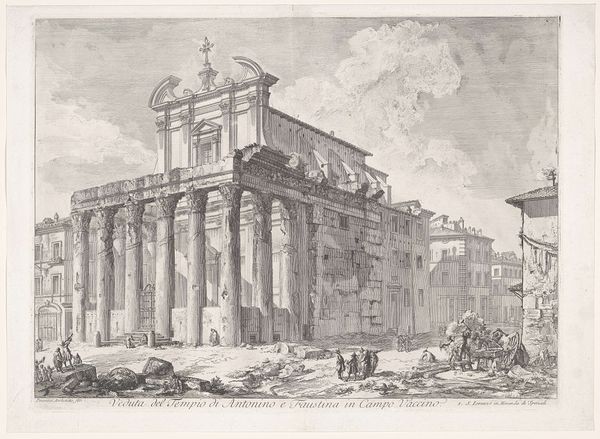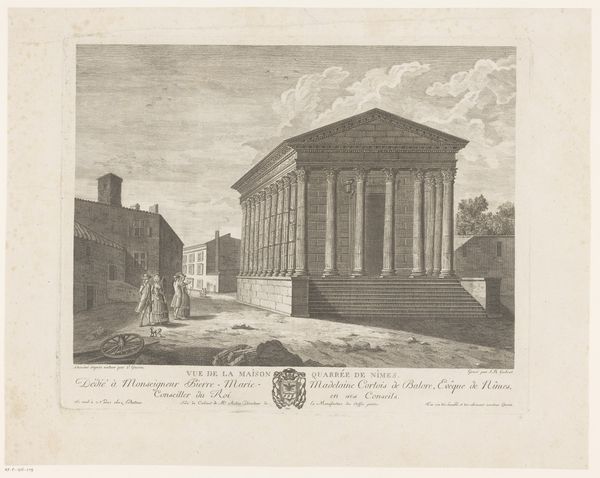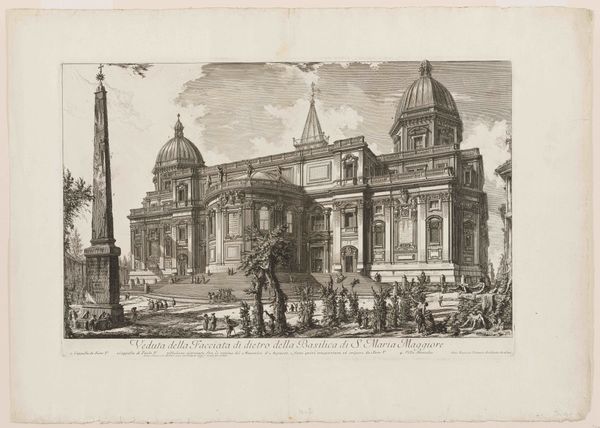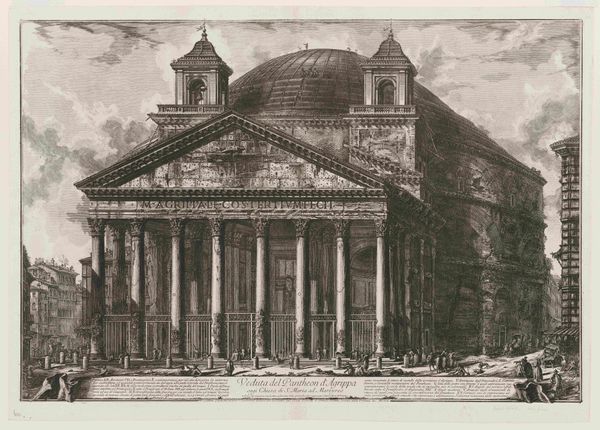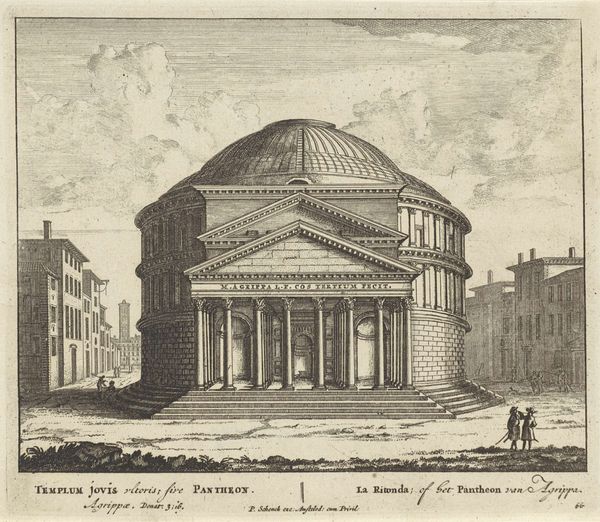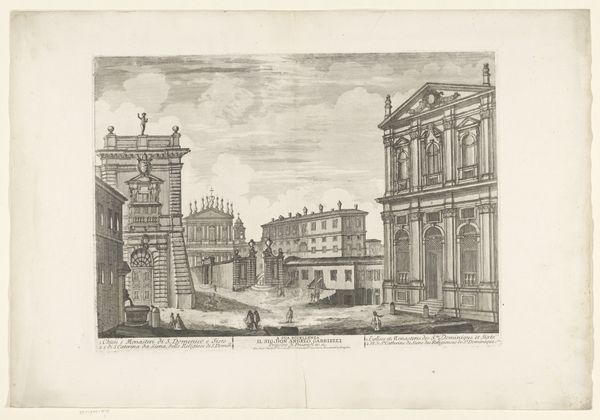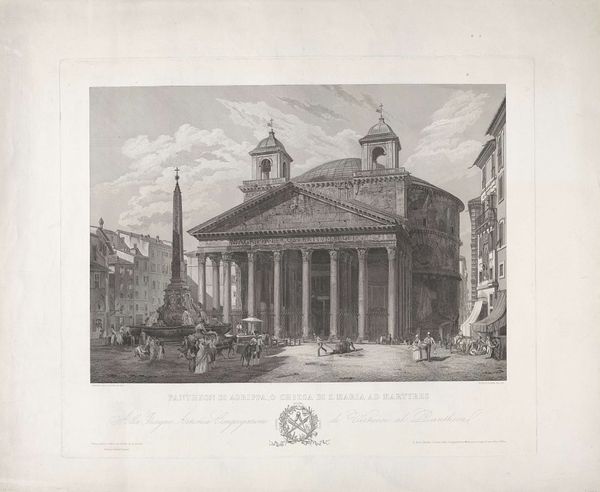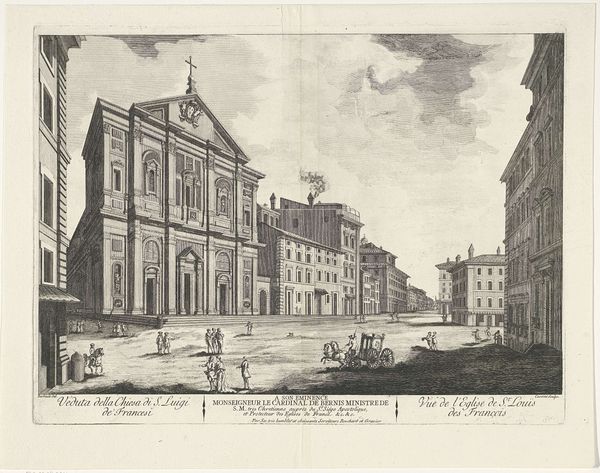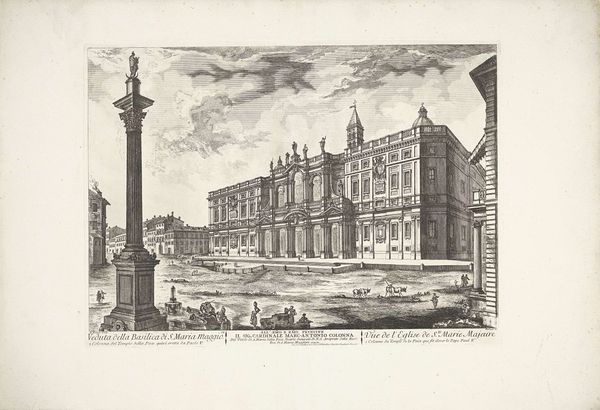
Dimensions: height 391 mm, width 543 mm
Copyright: Rijks Museum: Open Domain
Curator: Here we have Jean Barbault's "View of the Basilica di San Lorenzo fuori le Mura in Rome," created in 1761 using etching and engraving techniques. Editor: My first impression is of a faded dream, captured in exquisite detail. It's melancholic, almost ghostly, despite depicting a clearly monumental architectural subject. Curator: Barbault, working within the tradition of vedute, meticulously renders the Basilica's facade, capturing the texture of the stone and the play of light across its surface. The social context here is crucial: prints like this were widely distributed, contributing to the 18th-century's fascination with Rome's ancient and Christian heritage. Editor: Yes, I feel like I'm holding a memory of Rome in my hands, not Rome itself. The artist’s choice of line, especially, evokes a feeling of looking into the past, when line engraving was a prevalent way of documenting. See, for example, those clouds, those meticulous stones in the church wall! And yet, it also brings forward the monumentality of Rome. Curator: Absolutely, and it's important to consider the economic factors too. Prints were a relatively affordable way for people to acquire images of famous sites. Barbault likely had a workshop, employing skilled artisans who reproduced his designs, highlighting the collective nature of artistic production in that era. This brings to light the labor and manufacturing of the etching to create an artifact which became a cultural icon. Editor: Thinking about the social consumption of this print, imagine it adorning the walls of a scholar's study, next to natural history samples and archeological discoveries. How do you think it contributed to defining a grand tour cultural experience for the upper classes? Curator: It reinforced and disseminated a certain vision of Rome – a classical and Christian landscape worthy of admiration and pilgrimage. This print served both a documentary and ideological function. And don't you think it also acted as a vehicle of promoting the historical style through visual communication? Editor: I'd agree. It all comes down to how something material like a print transforms how an artwork is perceived, transforming something physical into a concept of grandeur, in a way. I do wonder, how do we reclaim something like its tactility after hundreds of years, given its iconic representation across contexts and geographies? Curator: Indeed, contemplating its tactile life and physical creation forces us to move beyond aesthetic appreciation and into realms of production, labor, and cultural exchange, altering the artwork's significance itself. Editor: That said, I now leave this view, which is both concrete and historical. Thank you!
Comments
No comments
Be the first to comment and join the conversation on the ultimate creative platform.
